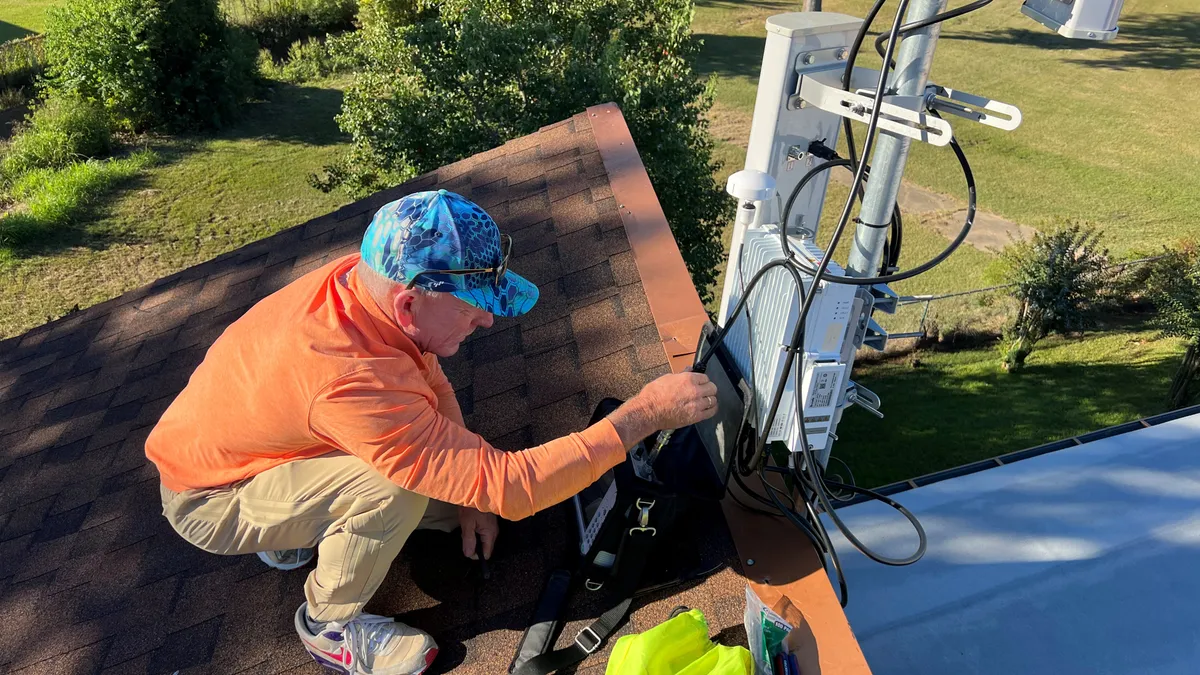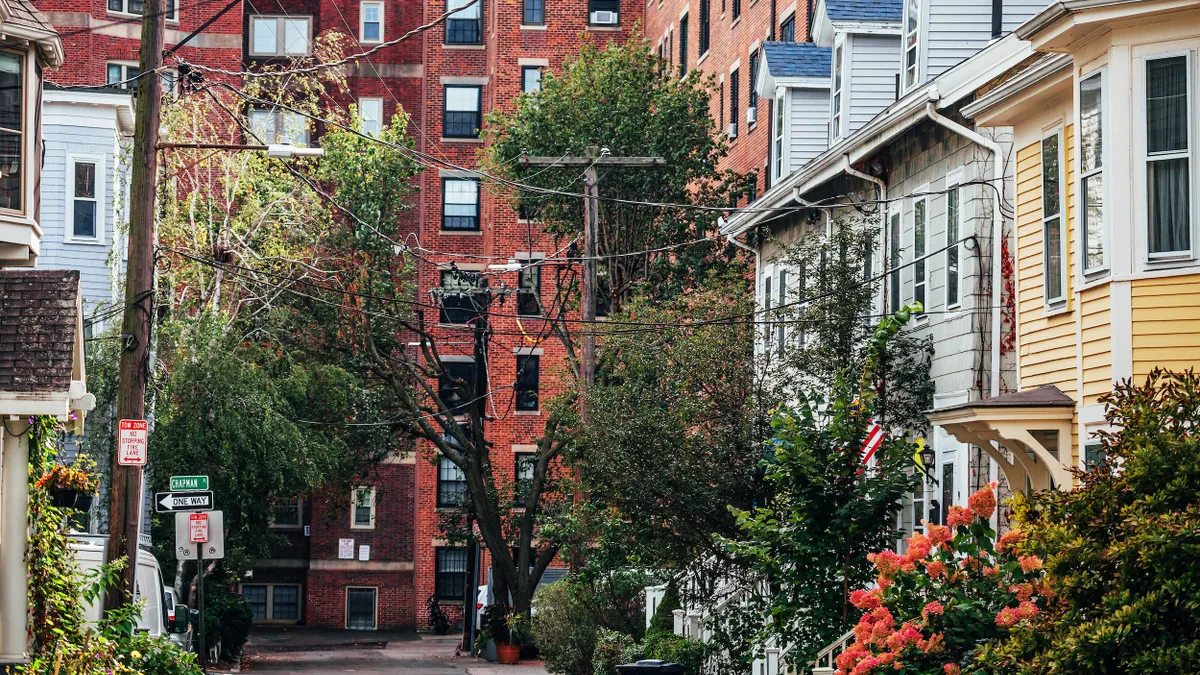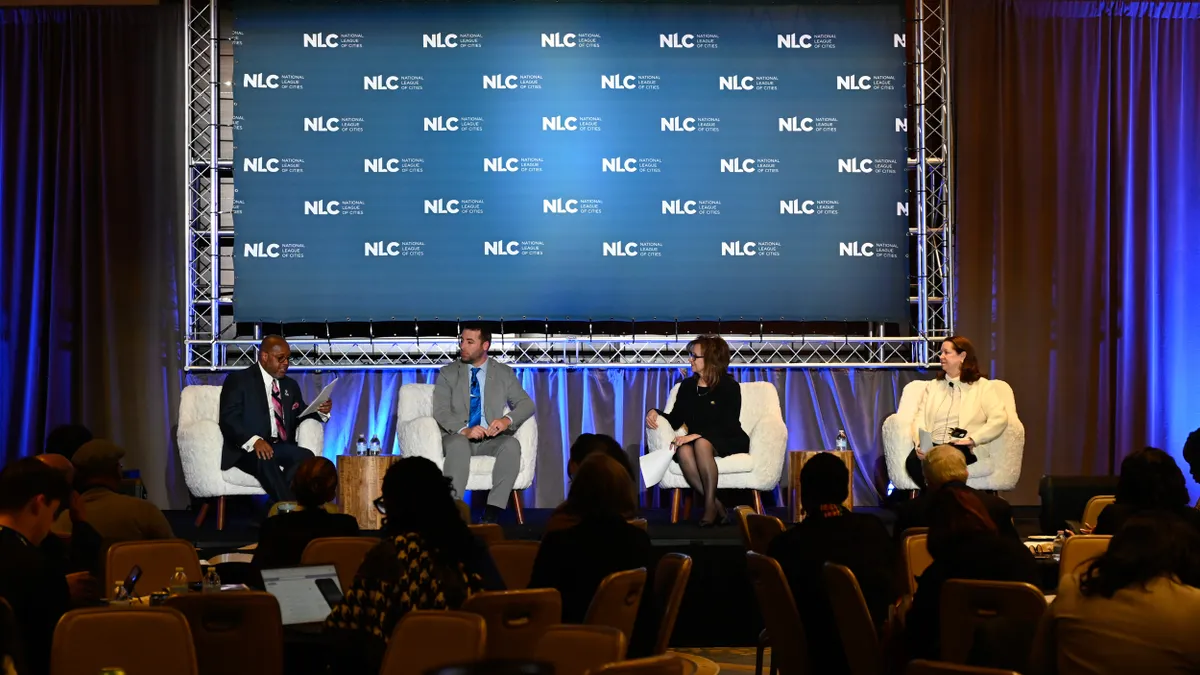When Shreveport, Louisiana, hired Keith Hanson as its chief technology officer and smart cities director in 2019, the city’s mayor asked him to address the digital divide and create a smarter city. Both efforts would require expanding broadband internet, making it one of Hanson’s earliest priorities.
Once he took the helm of Shreveport’s IT department, Hanson said he tried to understand the city’s digital infrastructure and internet access. He was initially stumped by the city’s digital divide: There was broadband infrastructure near almost every home, but many people seemingly lacked internet access.
To understand the scope of the problem and create a map of internet coverage, Hanson’s team installed Raspberry Pi computers on the city’s garbage trucks and used location data to identify WiFi networks in the city. They soon made a startling discovery: About 40% of Shreveport had no WiFi coverage, and nearly all the dead spots were in historically underserved communities, Hanson said.
“This [was] a massive divide,” Hanson said.
Hanson began meeting with telecommunications companies in 2020 to figure out how to extend internet service to communities where it was lacking and get the broadband service Shreveport needed for its smart city infrastructure. Near the end of a promising meeting, Hanson asked when Shreveport would get 5G wireless connectivity and was told the city was low-priority for 5G deployments.
At that point, Hanson realized that the city would need to address its digital divide on its own. Large telecom companies often don’t invest in poorer communities like Shreveport, he said, where about 1 in 4 people live below the federal poverty line.
“They’re still in this to go where the money is,” Hanson said, whereas the city primarily wants to invest in areas that don’t have enough internet access.
Although the Federal Communications Commission’s Affordable Connectivity Program offers financial assistance to help low-income households buy internet service from traditional providers, many eligible households don’t sign up for it because it’s too difficult to navigate, Hanson said. The program also doesn’t cover related expenses like internal wiring fees, which cost about $200 and are necessary to install broadband internet services in the older homes that many lower-income people live in, he said. According to the FCC, the ACP program only provides monthly discounts for internet service and a one-time deal to buy a laptop computer, desktop computer or tablet.
The city turned to its residents for help, asking voters to approve $22 million in bonds to install fiber-optic cables for additional broadband service and other technologies to upgrade its water, sewer and traffic control systems. But the ballot measure failed last December, dealing a blow to Hanson’s plans.
Turning to blockchain
The city’s IT department decided to explore building a public WiFi network with existing resources and infrastructure. That decision eventually led to a conversation between Hanson and Winston Lazar, founder and CEO of Spread Networks, a company that helps local governments, utilities and other organizations use open standard-based technologies for their digital infrastructure.
Lazar initially recommended that the city build a public WiFi network using Helium, a decentralized wireless IoT network that allows people to earn a cryptocurrency called HNT if they install specialized WiFi hotspots in their homes and businesses. However, Lazar and Hanson soon realized that a similar service, Pollen Mobile, would allow the local government to blast WiFi service throughout the city more effectively by using directional antennas.
If Shreveport hadn’t switched to Pollen Mobile for WiFi, “some of our best tower and roof locations would have put half our radio's power into the lake instead of into a home,” Hanson said.
Earlier this year, Shreveport set up a system with Pollen Mobile, which uses Citizens Broadband Radio Service — a band of the radio-frequency spectrum — to create a private 5G network for public WiFi. The city also uses Helium’s low-power wide-area network for smart city applications that require long-range communications. Implementation was quick, Hanson said, because the city built its network using open standards — a feat that would not have been possible with a traditional vendor using proprietary technology, he added.
The public library steps in
The Shreveport IT department and Spread Networks still needed a broadband connection, places to install equipment and a way to make the public aware that the WiFi service was available. That led to a partnership with Shreveport’s public library system, which already had high-speed internet service, filters to safeguard the public against unwanted content, physical locations in underserved communities and strong community relationships, Hanson said.
John Tuggle, executive director at Shreve Memorial Library in Shreveport, said libraries have tried to address the digital divide since the 1990s, but when Shreveport Mayor Adrian Perkins asked about providing internet access to children outside of libraries, he had little to offer.
“As a profession, librarians have had a hard time imagining getting outside of our buildings to provide internet access,” Tuggle said.
Tuggle said he was excited when Hanson and Lazar talked to him about using the library to build a public WiFi network. It was an opportunity for him and his colleagues to help their communities develop the digital skills they need to thrive, he said.
“Our economy has changed tremendously over the last 25 years,” Tuggle said. “It's really to the point where internet access … is needed just to be able to survive.”
At the direction of Shreveport’s IT department, Spread Networks installed the equipment necessary to operate the WiFi network at libraries in five communities, with each installation reaching up to 1,000 homes. Residents with a library card who live in the coverage area can access the network by picking up and installing a hot spot kit from their local library.
Promising results
While the program only recently took effect, the early returns appear promising, Tuggle said, noting that “it’s wonderful” to see so many residents excited to have greater internet access.
The approach was far less costly than Shreveport’s other options, Hanson said, with the city spending about $500,000 in American Rescue Plan funds on its public WiFi network. If it had partnered with a traditional internet service provider, Shreveport would have spent at least $5 million to reach the same number of homes, he said.
In addition to the cost savings, using an open standard like blockchain allowed Shreveport to build a customized solution without the need for a “master plan” because it’s interoperable, Spread Networks’ Lazar said, which means that it can work with an endless number of custom or readily available products and services. Moreover, because Shreveport owns all the infrastructure, the city can use, change and expand the network without asking vendors for permission or paying additional fees.
In addition to not having to deal with a dizzying array of proprietary and often incompatible technologies, using open technologies and platforms gives public officials far more control over their digital infrastructure, Hanson said, by providing them with “ultimate choice.”
“There is no artificial lock-in anymore,” he said.
Spread Networks, which operates the network for Shreveport, holds all the cryptocurrency the network creates to alleviate any crypto-related legal or financial risks the city could face, Hanson said.
“Nobody had the appetite for that,” he said.
The goal was to build a network that the city could use for public WiFi and smart city projects like a video camera system that aims to deter crime, Hanson said — cryptocurrency and blockchain technology are just part of making it work. The crypto tokens also provide an additional financial incentive for Spread Networks and similar vendors to succeed, he said.
“It's not just a service contract anymore,” Hanson said.
At the end of the day, improving internet access is the most important aspect of the project, he said.
“It doesn’t matter what technology you use,” Hanson said. “Lower the barrier, and make it as easy as [using] a library card to adopt it.”




















